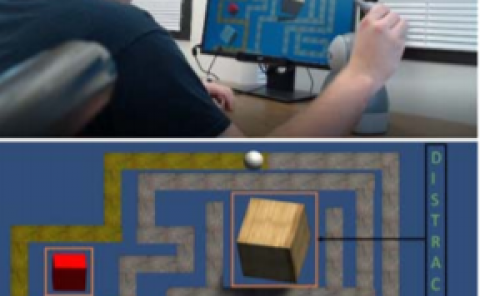Co-Actuation: A Method for Achieving High Stiffness and Low Inertia for Haptic Devices
PubDate: October 2019
Teams: Beihang University;The University of Auckland;Korea Advanced Institute of Science and Technology
Writers: Ruihang Chu; Yuru Zhang; Hongdong Zhang; Weiliang Xu; Jee-Hwan Ryu; Dangxiao Wang
PDF: Co-Actuation: A Method for Achieving High Stiffness and Low Inertia for Haptic Devices

Abstract
Achieving high stiffness and low inertia is a big challenge for current haptic devices. Impedance-based devices are limited in providing high stiffness while, in contrast, admittance-based devices are limited in generating low inertia. Thus, it is difficult to simulate hard contact and small inertia simultaneously in virtual environments. In this paper, we introduce a co-actuation module to overcome this difficulty. The module is a one degree-of-freedom (DOF) revolute joint which consists of a link and a physical constraint with a clearance between the two components. A motor controls the physical constraint moving cooperatively with the link. In free space, the constraint has no contact to the link and thus, users can move the link freely without feeling the inertia of the motor. In constrained space, the constraint comes into contact with the link and thus, users can feel a resistance from the motor. By means of a direct physical contact between the link and the constraint, users can feel a hard virtual surface. This paper describes the principle and the implementation of the proposed co-actuation module. Performance evaluation was conducted using a two-DOF haptic device in a task workspace of 100 mm × 100 mm. The effective inertia of the device is 64-142 g within the task workspace. The device can stably render a virtual wall with stiffness as high as 65 N/mm. The penetration to the virtual wall was 0.02-0.41 mm when tapping the wall with a speed range of 80-320 mm/s. The maximum back driving force was about 0.19 N when moving within 4.5-8.6 mm/s. The experimental results demonstrate that the concept of co-actuation is feasible in achieving high force, high stiffness range and low inertia for haptic devices.

